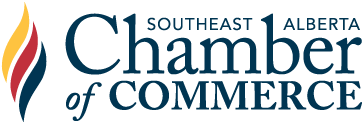Regulating the Sale of Raw Milk

Regulating the Sale of Raw Milk
Agriculture - Federal Policy
Issue
Through regulations enacted federally in 1991, selling raw milk in Canada has been illegal due to public health threats. However, increased consumer interest in unpasteurized dairy has renewed discussions on a range of issues linked to its benefits, challenges and risks with a call for a more robust regulatory environment for the production and sale of raw milk in Canada.
Background
Raw milk is already legal in over half the states in the USA as well as many European countries including the United Kingdom, France, Italy, and Switzerland. Although the sale of raw milk is restricted or unlawful in some U.S. states and in Scotland, Canada is currently the only G7 country that completely prohibits its private sale and distribution.
Drinking raw or unpasteurized milk comes with an increased risk of serious illness due to harmful microorganisms such as Salmonella, E.Coli and Listeria . Many foods, including raw milk, warrant concern for pathogens if not managed appropriately. Estimates report somewhere between 2% and 4% of Canadians consume unpasteurized milk , despite the restrictions imposed. While there is evidence and research that supports the concerns around raw milk, there is also ongoing research around ways to produce this safely for human consumption and provide safer choices.
Currently, raw milk operates in a “black market” in Canada. Because it is illegal, it is unregulated and unstudied. Provincial laws are inconsistent and the “criminals” in these cases are generally small family farms which take great pride in the quality of their fresh, unprocessed milk .
It is recognized that the potential for foodborne illness continues to be a real risk from consuming unpasteurized fluid milk, but analysis of data over a twelve-year period demonstrates that increased access to this product within the United States has not led to increased outbreak rates . On the contrary, total reported unpasteurized milk-associated outbreaks have declined since 2011, despite increased production, and outbreak rates proportional to estimated consumption rates have declined by 74% over the twelve-year period.
Through a report in 2020, data showed that raw milk being intentionally produced for human consumption is fundamentally different from pre-pasteurized milk that is taken from bulk tanks. It was concluded that "raw milk can be produced with a high level of hygiene and safety.” This paper provided insight that, with appropriate farmer training, careful production practices, and ongoing testing, low-risk raw milk can be achievable.
Research shows that raw milk can be contaminated at various stages during the raw milk production process. Farm size, animal numbers, hygiene, farm management practices, antibiotic use, storage, geographic location and season are just some of the factors that can impact risk of pathogen contamination.
In countries where it has been legalized, there are various standards imposed to address these concerns including registration and verification of producers licensed to sell, strict hygiene practices, testing for pathogens, verification of production and sales records and appropriate labelling on products including use-by dates, storage advice and warnings about the risks of raw milk for high risk groups. Some also restrict the sale to direct-to-consumer sales.
Currently, there are labelling requirements for cheese made from unpasteurized milk in Canada and there have been other guidelines produced such as the South Dakota Department of Agriculture and Natural Resources and the Texas Health and Human Services Guidelines for Raw Milk . There has also been farmer training developed for direct human consumption .
There is growing evidence that supports the need for a regulatory environment to address safer standards for raw milk versus letting the black market determine the outcomes of those seeking out raw milk products. The implementation of regulatory standards can better protect consumers, provide an informed choice, and address labelling and record keeping, standards and testing, risk mitigation, safe handling, heard health and farm requirements, among other requirements.
Recommendations
The Southeast Alberta Chamber of Commerce recommends the Government of Canada:
1. Implement regulated, legal pathways to raw milk access that use proven regulatory standards similar to those in South Dakota and Texas;
2. Require raw milk farmers to meet the regulatory standards prior to being licensed;
3. Provide a public directory of licensed producers to ensure public awareness and safety guidelines have been met;
4. Require labelling that outlines the warnings associated with the risks of raw milk.
References
1. Real Milk legal Map: https://www.realmilk.com/real-milk-legal-map/
2. Government of Canada: Raw or unpasteurized milk: https://www.canada.ca/en/health-canada/services/milk-infant-formula/raw-or-unpasteurized-milk.html
3. AgProud - Unpacking the controversy, health risks and legal landscape of raw milk in Canada: https://www.agproud.com/articles/58713-unpacking-the-controversy-health-risks-and-legal-landscape-of-raw-milk-in-canada
4. Artisan Dairy Raw Milk Laws: https://www.artisandairy.ca/learn-more/law
5. National Library of Medicine: Recent Trends in Unpasteurized Fluid Milk Outbreaks, Legalization, and Consumption in the United States (2018): https://www.ncbi.nlm.nih.gov/pmc/articles/PMC6140832/
6. Raw Milk Producers with High Levels of Hygiene and Safety (Cambridge Journal of Epidemiology and Infection 2020): https://pubmed.ncbi.nlm.nih.gov/32000877/
7. Labelling requirements for dairy products:: https://inspection.canada.ca/en/food-labels/labelling/industry/dairy
8. South Dakota Department of Agriculture and Natural Resources, Educational Guide for the Sale of Raw Mild for Human Consumption: https://danr.sd.gov/Agriculture/Livestock/DairyEggs/docs/300-001%20Educational%20Guide%20for%20Raw%20Milk.4.21.21%20R3.pdf
9. Texas Health and Human Services Laws and Rules for Milk and Diary: https://www.dshs.texas.gov/milk-dairy-unit/laws-rules-milk-dairy
10. Raw Milk Institute: https://static1.squarespace.com/static/5c930aceaf4683e69e2cd577/t/5df8154ff2bd8848118caaca/1576539479468/Final+RAWMI+Letter+for+Medical+Professionals.pdf
Date Approved: September 18, 2024
